This post is a beginner’s guide to forex trading.
You must have heard that forex traders make tons of money daily.
Well, it is not far-fetched considering that the daily trading volume in the global forex market is worth about $6 trillion as of November 2022.
Also, several brokers have been advertising their platforms online, promising a user-friendly interface and maximum returns on investment.
I bet you’ve seen them and you’re considering joining the bandwagon.
Then you should read this post to the end to understand the basics of forex trading and see a good broker to use.
Let’s roll…
Post Summary
- What is forex trading?
- How to trade forex
- Best forex broker for beginners – Windsor Brokers
- FAQs
- Conclusion
Click on any item above to read its details immediately.
Enjoy!
What is forex trading?
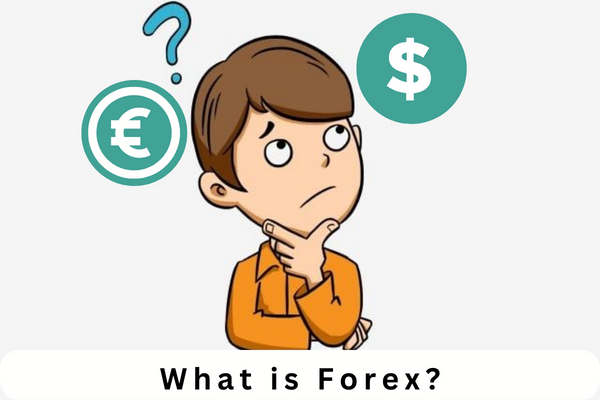
Forex (FX) is a blend of “foreign currency” and “exchange”.
As you know, foreign currency exchange, or simply foreign exchange involves changing one currency into another for various purposes. It may be for commerce, trading, or tourism.
Now, forex trading means buying and selling these currencies to make a profit.
Like the way you trade crypto, say, you sell BTC to buy ETH; in forex trading, you are selling a fiat currency to buy another one to profit from their value differences e.g selling EUR for USD.
Forex trading happens in the forex market. There is only one forex market in the world. And it is mainly a network of banks selling currencies.
Traders access the market via forex brokers like Windsor Brokers.
So, they buy currencies at a low price and then sell at a high price to make profits.
Let’s see how they do it in the next section
How to trade forex
Trading forex involves 3 core steps namely:
- Understanding the forex market
- Developing a trading strategy
- Choosing a broker
I further explained each step below.
a. Understanding the forex market
Bear with me, we’ll have several subsections to achieve our goal here.
First, we’ll look at the terms used in forex trading:
i. Currency pair
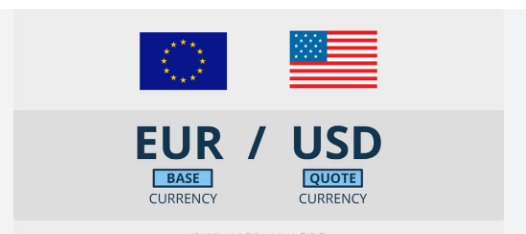
In forex trading, you cannot buy/sell only one currency.
Currencies are traded in pairs e.g GBP/USD where the first currency is the base currency and the second one is the quote currency.
So, a currency pair is a price quote of the exchange rate for two different currencies.
When an order is placed for a currency pair, the base currency is bought while the quote currency is sold.
Meaning that if you placed an order for GBP/USD, you’re selling USD to buy GBP.
To further break it down, if you choose to:
- Buy GBP/USD, you believe the price of GBP will rise against USD
- Sell GBP/USD, you believe the price of GBP will fall against USD
ii. Ask
This is the lowest price at which you want to buy a currency.
iii. Bid
A bid is a price at which you want to sell a currency.
iv. Bear market
A bear market signifies a market downtrend i.e. prices decline among currencies.
v. Bull market
On the other hand, a bull market shows a market uptrend where prices increase for all currencies.
vi. Contract for difference (CFD)
A CFD is a derivative that allows traders to speculate on price movements for currencies without owning the underlying asset.
So, when a trader bets that the price of a currency pair will increase, he will buy CFDs for that pair.
Otherwise, he will sell CFDs relating to that currency pair.
vii. Leverage
Leverage refers to the use of borrowed capital to multiply returns. It helps traders to boost their positions.
“High leverages” is very common in the forex market.
For example, a trader may deposit his $1,000 and borrow $9,000 from his broker to bet against the EUR/JPY pair.
This means that if the trade goes in his favor, his profit will be generated by a $10000 investment instead of just $1000. Cool!
viii. Lot size
In forex trading, currencies are traded in standard sizes known as lots.
The lot size is the number of currency units you can trade with.
Brokers allow four common lot sizes namely
- Standard – 100,000 units of the currency
- Mini – 10,000 units
- Micro – 1,000 units
- Nano – 100 units
NB: The larger the lot size, the higher the profits (or losses), and vice versa.
ix. Margin
This is the money set aside in an account for trading a currency. It works hand-in-glove with leverage.
Margin assures the broker that the trader will be able to pay borrowed funds even if the trade does not go in their favor.
x. Pip
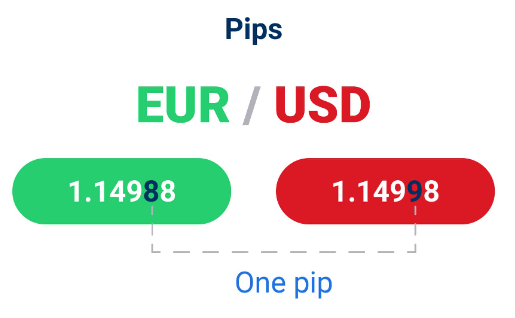
Pip means “percentage in point” or “price interest point.”
It is the minimum price move, equal to four decimal points, made in currency markets.
That is to say, one pip equals 0.0001.
Also, the pip value can change depending on the standard lot size offered by a broker.
xi. Spread
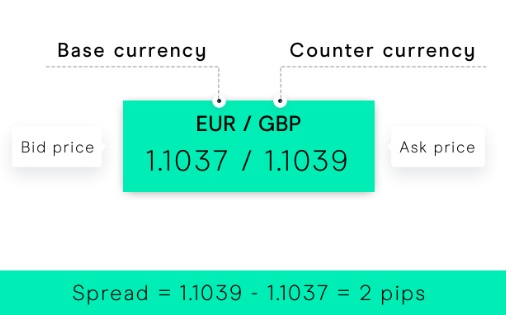
Think of spread as the forex trader’s profit.
It is the difference between the bid (sell) price and the ask (buy) price for a currency.
Forex traders make money through spreads.
And the size of the spread is influenced by many factors like the lot size, demand for the currency, and its volatility.
xii. Forex account
You need a forex account to make currency trades.
Depending on the lot size, there can be three types of forex accounts:
- Micro forex accounts – allow you to trade up to $1,000 worth of currencies in one lot.
- Mini forex accounts – allow you to trade up to $10,000 worth of currencies in one lot.
- Standard forex accounts – allow you to trade up to $100,000 worth of currencies in one lot.
But a broker may allow traders to open other accounts with smaller lot sizes like Windsor Brokers which offers a Prime Trading account with a minimum deposit of $50.
Are you still here? Good.
Next, we’ll see the different venues for trading forex:
i. Spot Markets
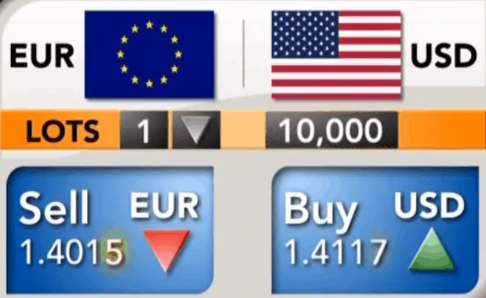
This is where currencies are bought and sold based on their trading price.
It is a transaction between two parties, where one party delivers an agreed amount of a currency to the counterparty and receives a designated amount of another currency at the agreed-upon exchange rate value.
Here, the deal is closed in the present (not in the future) but settlement may take about two days.
ii. Forwards and Futures Markets
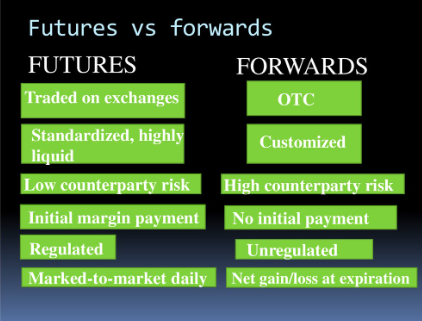
From the name you can already tell that Forwards and Futures Markets involve transactions that are completed on a future date.
And unlike the spot market, these markets do not trade actual currencies.
They deal in contracts that represent claims to a certain currency type, a specific price per unit, and a future date for settlement.
For a forward contract, we are looking at a private agreement between two parties to buy a currency at a future date and at a predetermined price.
Then a futures contract is a standardized agreement between two parties to take delivery of a currency at a future date and at a predetermined price.
Now, the forwards market involves two parties, who determine the terms of the agreement between themselves but the futures market depends on a standard size and settlement date on public commodities markets.
Also, while forward contracts are sold Over The Counter (OTC), futures contracts are sold in exchanges.
The advantage of these markets is that they can help to hedge against future exchange rate fluctuations.
Moving on, we’ll look at the charts used in forex trading
Basically, charts are used to understand the price movement of a currency before making a decision to buy or sell.
Line charts, bar charts, and candlestick charts are the three types of charts used in forex trading.
i. Line Charts
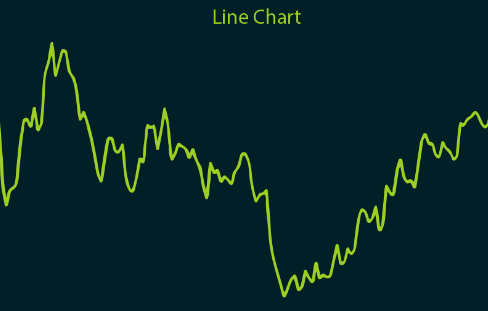
Line charts are the most basic type of chart used by forex traders.
They show the closing trading price for the currency for the time periods selected by the user.
Thus, they help to identify big-picture trends for a currency because they go from one closing price to the next closing price, covering a long period of many price points.
For instance, you can use the information contained in a trend line to spot breakouts or shift for rising or declining prices.
ii. Bar Charts


Bar charts provide more information than line charts.
Each bar represents one day of trading and contains the OHLC for a trade i.e. the
- Opening price
- Highest price
- Lowest price
- Closing price
Therefore, bar charts are used to represent specific time periods for trading.
A dash to the left side of a bar is the day’s opening price, and a similar dash on the right is the closing price.
Sometimes, colors are used to indicate price movement; green or white is used for periods of rising prices while red or black is for a period of falling prices.
iii. Candlestick Charts
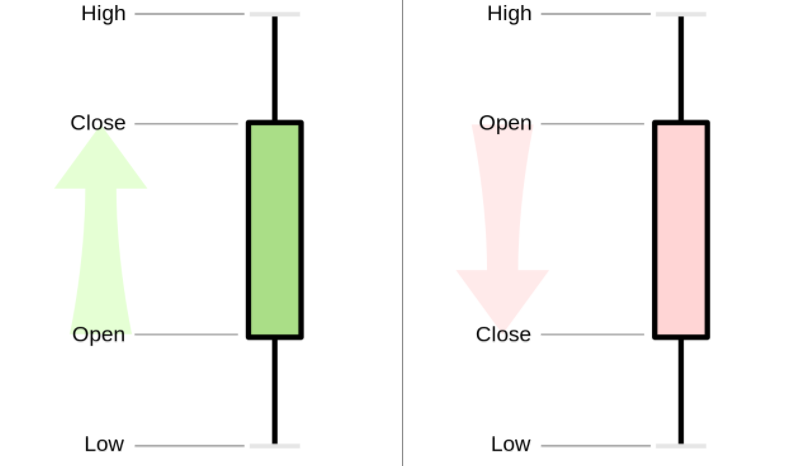
Candlestick charts are more attractive and easier to read than other chart types.
There are two kinds: Up candles colored green or white and Down candles colored red or black.
The Up candle represents a bull market while the Down candle represents a bear market.
Also, the top and bottom (wicks) of each candle are the opening and closing prices of the currency for that day.
In a green candle, the opening price is at the bottom and the closing price is at the top.
Whereas, in a red candle, the opening price is at the top and the closing price is at the bottom.
Got it? Good!
Lastly, in this sub-section, let’s see the different forex trading sessions.
Forex Trading Sessions
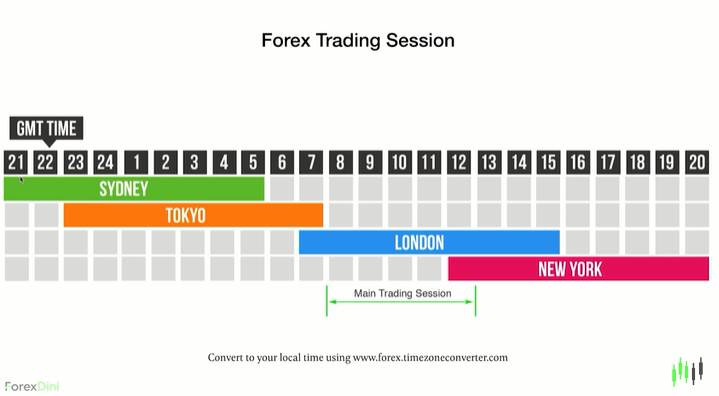
Here, we’re looking at the different periods of the day when forex traders buy and sell currencies.
There are four trading sessions, namely:
- Tokyo – open from 12:00 am to 9:00 am UTC
- London – open from 7:00 am to 4:00 pm UTC
- New York – open from 1:00 pm to 10:00 pm UTC
- Sydney – open from 9:00 pm to 6:00 am UTC
These are the locations and times when the major financial centers of the world are very active.
Note also that the forex market is open 24 hours but only during the 5 weekdays (Monday – Friday)
So, the best time to trade is during the day when banks are open and functional.
Now, let’s look at the second step on how to trade forex.
Read on!
b. Developing a trading strategy
After you’ve understood how the forex market works, the next thing is to develop your trading strategy.
Here are the popular ones:
Scalp trading
This strategy involves holding positions for seconds or minutes to profit from price swings of the most liquid currency pairs, and at the busiest times of trading during the day.
Also, trades are cumulative, meaning that small profits made in individual trades add up to a good amount at the end of a day or time period.
Day trading
Here, the trader is holding and liquidating positions on the same day.
This type of strategy may last for hours or minutes, and it relies on incremental gains throughout the day for trading.
So, you need to understand relevant technical indicators to maximize profit gains.
Swing trading
Swing trading involves holding positions for more than a day i.e. for days or weeks.
It is more profitable when you don’t need to constantly monitor the market throughout the day.
And that’s probably due to major announcements by governments or times of economic tumult.
So, a swing trader must master how economic and political developments impact currency movements.
Position trading
This means holding the currency for a long period of time, for as long as months or even years because you see a lot of potential in the currency.
Here, you must have fundamental analysis skills to provide a reasoned basis for the trade.
Other strategies are:
Moving average (MA)
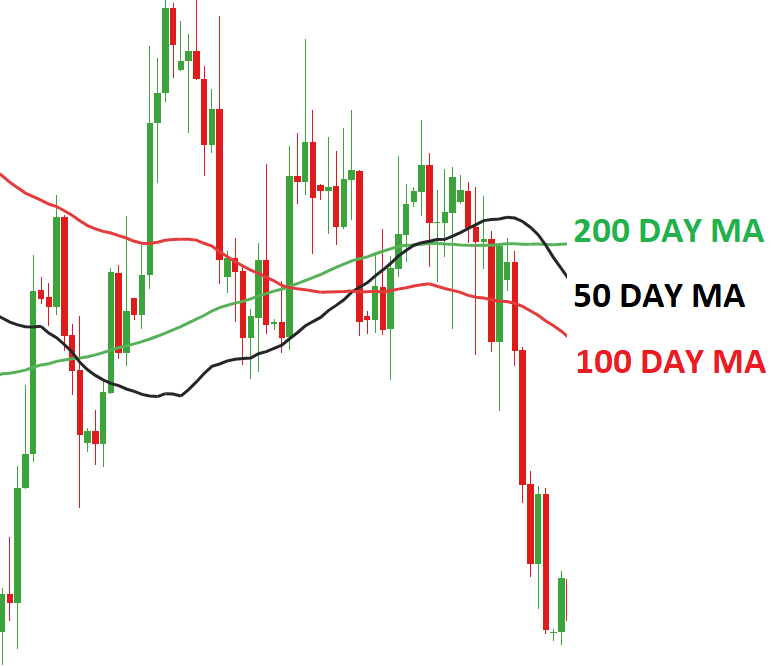
This is simply leveling the price data of a currency over a specified period by creating a constantly updated average price.
It helps you to override the impacts of random, short-term fluctuations on the price of a currency over a specified time frame.
The longer the period for the moving average, the better.
50-day and 200-day moving average figures are widely followed by investors and traders.
Also, a rising moving average indicates an uptrend while a declining moving average indicates a downtrend.
Get more details about MA here.
Breakout
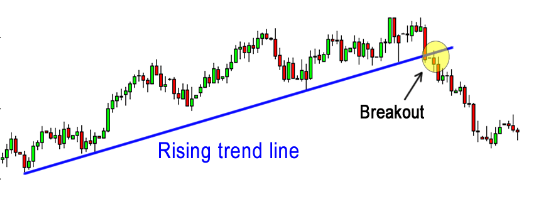
This is when the price of a currency moves above a resistance area, or moves below a support area.
It shows the possibility for the price to start trending in the breakout direction.
For example, a breakout to the upside from a chart pattern could indicate the price will start trending higher.
You can then choose your position for the trade.
***
Generally, a forex trader is either going long or short on a trade.
A long trade means you’re betting that the currency price will increase in the future while a short trade is betting that the currency price will decrease in the future.
The whole idea is to choose a direction that will profit you.
[Suggested Read: Technical And Fundamental Analysis Explained!]
Moving on, we’ll look at the third step on how to trade forex.
Keep reading!
b. Choosing a broker
Before choosing a forex broker, look out for these 5 things:
i. Regulatory Compliance
Only open accounts with brokers that are regulated.
Depending on the location of the broker, confirm that it is regulated by the responsible body in that region.
For example, in the United States, a reputable forex broker will be a member of the National Futures Association (NFA)
Then in Nigeria, forex trading is legal but it is not regulated by any national governing body but you can confirm that is registered with CAC.
When you visit the broker’s website, you can find this information in the “About Us” section.
ii. Account Features
Secondly, you want to check for relevant features like:
- Leverage and Margin
Users should have access to leverage in their margin accounts.
- Commissions and Spreads
Learn how the broker makes money; whether it is from commissions or wide spreads.
Then choose what works for you; zero commissions and tight spreads are recommended.
And that’s because the smaller the spread, the easier it is to make a profit.
- Initial Deposit
You want to check the initial deposit to be sure that you can afford to trade with that broker.
Gratefully, forex brokers like Windsor allow you to fund your account with as little as $50.
Others offer standard, mini and micro accounts with varying initial deposit requirements.
- Ease of Deposits and Withdrawals
This is vital. Read public reviews of the broker and be sure that it is easy to make withdrawals.
Also, confirm that the supported payment methods are available to you.
Then check for low/high service fees before you make your choice.
iii. Currency Pairs Offered
Make sure that the broker offers the currencies that you are interested in.
The most liquid pairs include EUR/USD, GBP/USD, USD/JPY, and USD/CHF.
iv. Customer Service
Since forex trading occurs 24 hours a day, you want to go for a broker whose customer support is available at any time.
v. Trading Platform
Although this is last on this list, it is very crucial because the trading platform is your access to the forex market.
Ensure the broker you’re going for has the technical and fundamental analysis tools you need, and that trades can be entered and exited with ease.
Look out for clear buy/sell buttons and possibly a “panic” button that can close all open positions, customization options, order entry types, automated trading options, strategy builders, backtesting features, trading alerts, and free demo accounts.
MT4 and MT5 are the most sophisticated trading platforms. So, check for them.
Now that you’re ready, let me show you the best broker for beginners.
Tag along!
Best forex broker for beginners – Windsor Brokers

Windsor Brokers is one of the oldest in the game. It was established in 1988 and it is regulated by CySEC.
Also, it offers over 100 tradable products including currencies, indices, commodities, cryptocurrencies, etc.
Earlier, we talked about what to look out for when choosing a broker and Windsor checks all the boxes.
It offers tight spreads and supports the MT4 trading platform.
Additionally, it provides you with a funded demo account which you can use to master the market.
Please read our review of Windsor Brokers to learn more and see the steps to get started.
We’re almost done here. Let’s answer a few questions and then we can wrap up the post.
FAQs
Forex markets are less volatile than other markets, such as real estate and crypto because they are among the most liquid markets in the world.
But the politics and economics of a country can result in significant volatility of its currency.
Yes, it most certainly can.
However, if you fail to understand the forex market before you start trading, you may bag plenty of losses.
So, endeavor to;
Choose the currencies you buy based on the status of the country
Listen to the news to stay updated on economic events
Study chart patterns to make good trading decisions.
I must add that investing with a good sum can help you make more profit because the spreads are usually little.
Well, thanks to the leverage provided by brokers, you can make huge profits.
Sadly, if the trade does not go in your favor, you’ll make large losses too.
Therefore, make sure to get your analysis right. If possible, get a coach.
Conclusion
This is where we will draw the drapes in this tutorial. I hope you learned a lot about how to trade forex.
Now tell me; will you start trading forex? Or, are you a forex trader already? Which currency pairs do trade most?
Let me have your responses in the comments section. Also, ask any questions you may have.?
Before you go, hit those SM buttons to share this post with your friends. Thank you!



0 Comments